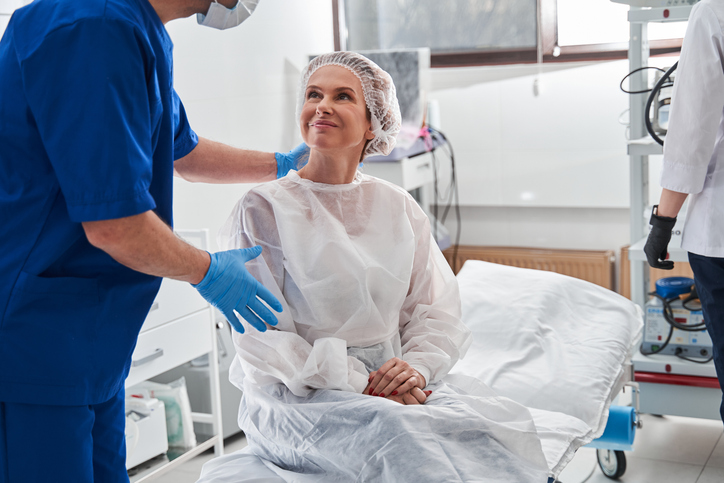The term endoscopy refers to a range of examinations performed with a camera called an endoscope.
The history of the endoscopy
Historians say that even the ancient Greeks and Romans had endoscopes, however, in 1805 Phillip Bozzini invented the Lichtleiter, which is considered the first true modern endoscope. The Lichtleiter was the first device designed to examine the gastrointestinal tract.
In 1964, doctors were able to take photos of a patient’s stomach suing a GI camera. Similar fiberscopes were used for viewing stomach contents for years but this later gave way to video scopes, which led to video scope development.
The advent of video cameras and TV displays enabled doctors to benefit from live video feed of the examination on an HD screen endoscopy to enhance the process. In modern endoscopy, nurses, doctors and other healthcare professionals have access to hi-res images and video which allow them to diagnose stomach conditions with accuracy in real-time.
What diseases can be detected by an endoscopy?
Doctors use endoscopy to diagnose and treat many conditions including gastrointestinal disorders such as ulcers, inflammations, and tumors that develop in the esophagus, stomach, or intestines.
An endoscopy diagnoses issues in the respiratory system, such as abnormalities in the trachea, bronchi, or lungs. Other conditions that can be detected with endoscopy include liver diseases, pancreatic disorders and abnormalities in the urinary tract.
What should you expect during an endoscopy?
Patients are asked to lie on a table on their backs or side. Depending on the type of endoscopy, the doctor will insert the endoscope through the patient’s mouth or anus.
Likely, the doctor will also administer medication to help the patient relax during the procedure. After the medication sets in, the endoscope will be gently moved through the body, allowing the doctor to view and examine the inside of the patient. Don’t expect pain, but there may be minor discomfort.
What are the risks?
Endoscopy, while generally safe is not without risk. Potential risks of endoscopy include bleeding, infection and tissue damage. It’s also possible that there might be perforation, which means that the endoscope accidentally punctures the wall of the patient’s organ.
People with pre-existing health conditions or allergies to medications should be extra careful about going under for an endoscopy. If you have one of these conditions, talk with your doctor and determine if the benefits outweigh the risks.
How long does an endoscopy take?
The length of an endoscopy varies depending primarily on the type of procedure being performed and the complexity of the patient’s case. However, generally, it will last between twenty and sixty minutes.
Some types of endoscopy, such as colonoscopy, may take longer due to the larger area being examined. The endoscopy may only take a few minutes, but additional time may be needed for preparation and recovery. The patient will be asked to arrive at the medical facility before the procedure to allow for any necessary preparations, such as fasting or taking medications. After the endoscopy, the patient will be allowed to rest in a recovery area until the effects of any sedatives or pain medication have worn off.
The total time spent at the medical facility for an endoscopy procedure can range from a few hours to half a day.
How do you recover from an endoscopy?
Thankfully recovering from endoscopy is straightforward. Expect to be able to return to your normal lifestyle within a day or two. If you don’t follow the doctor’s instructions for post-op care, recovery could take longer.
Post-op, the patient will be taken to a recovery area to be monitored until any pain medication has worn off. During this time period, the patient might feel drowsy or disoriented. Don’t go out to dinner or party after an endoscopy – driving the patient home immediately following release is paramount.
As soon as the patient returns home, they should rest as much as possible and avoid strenuous activities for the rest of the day. It is also essential to drink plenty of fluids so as to prevent any dehydration from occurring. instructed to follow a special diet, they should follow those instructions carefully.
Any discomfort or Upon returning home, it is imperative that the patient rest as much as possible and avoid strenuous activities for the remainder of the day. To prevent dehydration, it is also essential to drink plenty of fluids. If the patient is instructed to follow a special diet, they must carefully follow those instructions. Any discomfort or side effects from the procedure should subside within a few days.
Upon returning home, it is imperative that the patient rest as much as possible and avoid strenuous activities for the remainder of the day. To prevent dehydration, it is also essential to drink plenty of fluids. If the patient is instructed to follow a special diet, they must carefully follow those instructions. Any discomfort or side effects from the procedure should subside within a few days
Immediately following the procedure, if the patient experiences severe pain, bleeding, difficulty swallowing, or other unusual symptoms, they should contact their doctor or healthcare provider. In most cases, endoscopy procedures tend to be relatively easy to recover from.
You may experience additional discomfort after your endoscopy and need to rest for more extended periods. For example, if you had an upper GI endoscopy, you might experience symptoms like having a sore throat, in which case you’ll need to restrict your diet to only soft foods for a few days.
Looking for an endoscopy in Los Angeles?
If you are looking for an endoscopy near Los Angeles, look at Wilshire Endoscopy Center. Wilshire Endoscopy Center is a specialized endoscopy suite with a concentration of specializing in both the upper and lower GI tract. With extensive experience providing patients with the care and treatment that they need, we are here to help. Feel free to contact our team to schedule a consultation for an endoscopy appointment.


